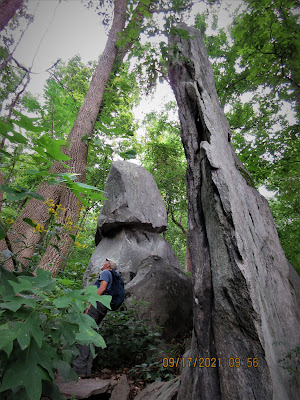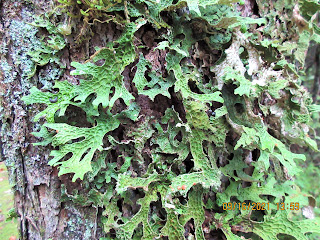It is Saturday and the parking areas are already full. Parking roadside is the only option. We find a space and are able to squeeze just off the road. Our hike begins as a road walk on Black Balsam Road. We walk about a quarter mile and head into the dark forest on Art Loeb and the MST.
The trail is eroded but there is very good ground nearby to easily walk on. Our first prominence of note is Silvermine Bald. The trail goes fairly close to the highest point. We wade through some vegetation to try to locate the highest point. On to Chestnut Bald! The trail skirts the side of Chestnut, so a bushwhack up is needed. We follow a social trail to the top. The pile of rocks above, form a arrow, pointed at the highest point which is among a clump of fallen trees.
The rest of the hike takes us to an access trail from Devils Courthouse parking area. At that point we make an abrupt right turn onto Little Sam Trail. It is an old railroad bed. At one point, we stop to eat a snack and see a large amount of twisted wire cable intertwined in the tree roots.
To finish off the hike, we turn onto Flat Laurel Creek trail. It is wet, with running water most of the way. Still, we manage to keep fairly dry boots through here.
Just shy of the parking area, we enter this gorgeous meadow ablaze in early Fall colors.
We are pleased to see that we have hiked 5.2 miles with about 600' in elevation gain, thus just barely meeting the SB6000 Challenge criteria to count this 6000'+ peak.





























































